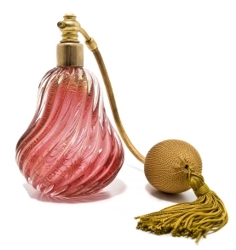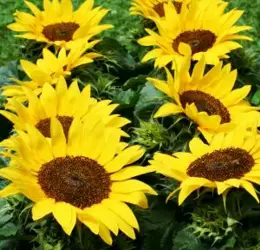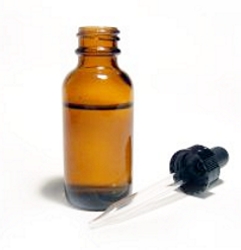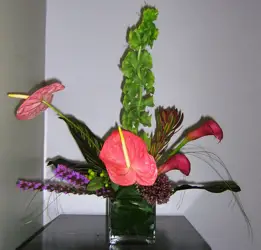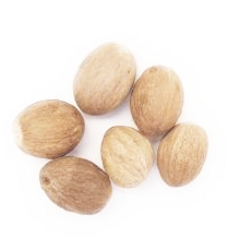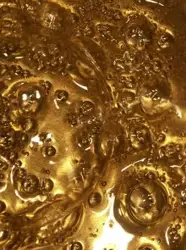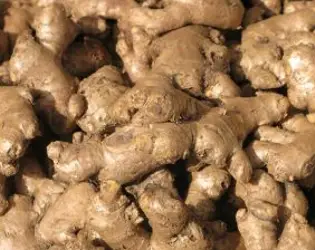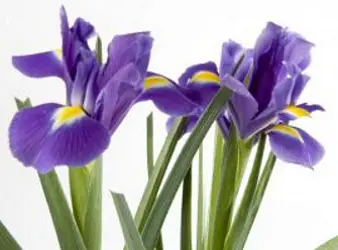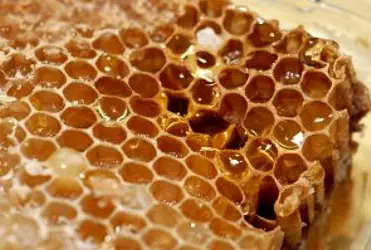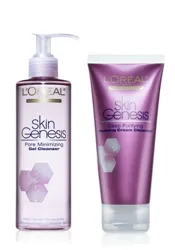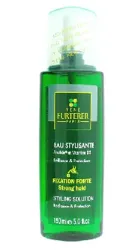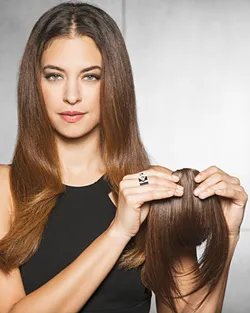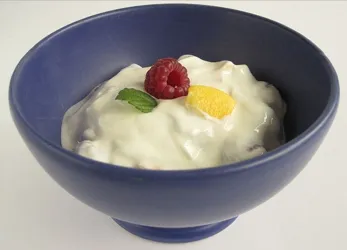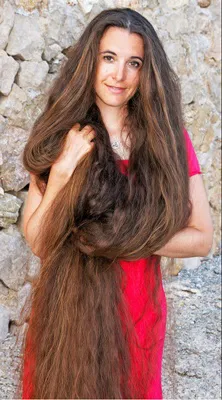
Art & Matter: A Look At Sculpting The Molecule
Introduction
With raw materials that are taboo, banned, nearly extinct or to be used in moderation, can we still innovate in the realm of fine perfumery and open new paths for the future through naturals or synthetics? The answer is yes, for those who’d like to hear it. For decades, people have spoken of the fragrance palette in hushed tones, whispering terrible predictions about the date planned for its annihilation, comparing it to shagreen. Of course, nature and regulations have made dismal cuts into the usual panorama of materials. The financial crisis has cut budgets (high) in half for possible future star materials. But sustainable development and the frenzied proselytizing that goes with it have come in just at the right moment to rally the common-sense crusade. We can also stay philosophical and think, often rightly so, that it’s not raw materials that are lacking, as the 800 new fragrances launched throughout the world in 2009 prove. RundownSo yes, it’s true, things are happening in fragrance. “They announce the end of the use of certain natural raw materials, for reasons of price, legislation, trends, but we have quite a lot of resources to face the situation. These constraints enabled us to bounce back with new opportunities, via technology, and that’s a formidable challenge that allows the industry to really expand again,” sums up Christine Gladieux, vice president raw materials of the Robertet group (Charabot-Robertet), which has become one of the top natural products platforms in the world, a major supplier of composition companies and increasingly of brands. “We may use fewer natural molecules and perfumers may sometimes prefer synthetic ones, but the major groups are working a lot more in an open-formula style and we are seeing a return to natural ingredients,” she adds, pointing out an incredible partiality for gorgeous materials “among perfumers of the light generation” not very familiar with this level of quality and delighted to make as much use and abuse of it now. Hence chypre’s comeback is no accident. What’s coming back strong is a desire for the beautiful, the good and the real. And with this, a questioning of processes, work methods, and a concern for purity, lightness and subtlety which “product hearts” – fractions, or assemblages of fractions of a raw material – provide. Constantly improving quality
It’s not so much that professionals’ enthusiasm is waning, but that curiosity is, especially the curiosity of consumers. For some years they’ve been used to repetitions from a fragrance industry financed and commanded by major groups, an industry that doesn’t dare to venture onto recently carved paths, out of fear of getting dizzy on the new fragrance emotions. A dizzy spell happens so fast… And yet we can reassure ourselves at once that creativity is very present from one end to the other of the fragrance sector, in synthetics and naturals. “Today, perfumers know very well how to formulate with natural ingredients again, and every bit as well to use the great materials. And they do this with great creativity enabling them to make abstract scents with naturals,” says Ms. Gladieux, happily, unhesitatingly citing Christine Nagel, fragrance-maker at Fragrance Resources,“who has a very feminine way of using her juices: she immediately makes naturals, and notably rose, fabulous." Or Maurice Roucel “who showed talent in re-launching marigold_ndw1plus de 3000 matieressambac jasmine, as Sophia Grosmann was able to give rose a modern twist, giving the young generation the desire to use it in their creations.” The natural ingredient is the soul of the fragrance and that’s the one that stands out.” It’s true evolution also comes through “fragrance speak,” the incredible way perfumers have now of telling the story of their great materials. They no longer use an angelic or marketing style as was the case quite recently still, but a very artistic one, mixing the realism of process with the intended creative effect.
“Fragrance work isn’t material, as opposed to the work of a fashion designer,” explained Olivier Polge at the launch of Balenciaga Paris, which he composed together with Nicolas Ghesquière using the brands’ archives. “Violet was used in a “green” way, with flowers and leaves, on a chypre accord with redistilled wood essences to make the colors a bit brighter. So the violet looks a little leathery, has a little bit of a patina, like a violet with chypre overtones.”
As to the average quality of the fragrances, “it’s improving from year to year, in spite of the banalization and number of products launched. But there is less and less capacity for differentiation because of lack of budgets for beautiful raw materials. It’s a shame, because it signals the disappearance of great signatures. If we have to act, it’s now,” says Xavier Brochet, vice president natural product innovations at Firmenich. Innovating through necessityAt Firmenich, Givaudan, IFF, Robertet, Symrise, Takasago and other companies, everybody is thinking about the palette of the future and the stakes of the future for the profession, whether in terms of maintaining tradition or maintaining the future of the industry. In 22 years in the industry, Xavier Brochet has seen “raw materials and many other products, which seem new to us and have existed for a very long time in other regions of the world, disappear, reappear and appear. That’s also our job – getting raw materials transferred.” But it’s also to develop the traditional avenue of growth, meaning extraction with supercritical CO2 (liquid and gaseous), whose range is extended every year. “We’ve tried to use this technique on floral concrètes, followed by other techniques making it possible to deal with other raw materials,” explains Mr. Brochet, who remains discreet on the 4th generation under preparation, which is going to widen the field of the possible for this ultra-clean technique, as there are no residual solvents, natural CO2 being recycled several times then released in nature, just like when it was captured. Combining natural and synthetic
Recent work at Firmenich on alternatives to natural moss, made necessary by IFRA standards, has made it possible to go back to the mosses of yesteryear, by reconstituting moss without moss. With the help of synthetics and naturals, Firmenich launched Fireco Oak Moss and Fireco Tree Moss, offered at once to fragrance makers. “For us it’s an important step and the stakes are significant for the future and not only for fine fragrance, because this material is used a lot in the functional fragrance sector,” explains Mr. Brochet. Another avenue of development is bio-prospecting, or product evaluation all over the world and from other sectors: “This is the dreamiest part, but also the most time-consuming,” admits Mr. Brochet, “because you have to get a culture going, analyze it, test, wait, respect the seasons and nature.” Firmenich recently experimented with two Asian ingredients, one extracted from a root to become a new vanilla, and the other extracted from dried fruits to be distilled and become a tagetes substitute (smell of fruity liqueur) without the downsides of tagetes, an allergen. This took four years of development but fragrance makers are beginning to use the ingredients in their compositions. “Within a year from now, one of these ingredients will be used in a market sensation.” Similarly, Firmenich, like all fragrance makers, is working on an affordable synthetic patchouli to alleviate the uncertainties of patchouli crops. As for the IFF, a new Naturals platform has been formed, made up of four sites: Grasse and La Lozère (LMR), Barcelona (Benicarlo) and Isparta in Turkey for rose (in partnership with Ercetin). Placed under the responsibility of the IFF’s R&D director in New Jersey, this platform benefits from all the research of the group’s synthetic labs and the contribution of biotechnologies, thus facilitating the emergence of new projects. Making cost-saving formulationsSince natural ingredients are a bit more expensive than synthetic, they are the ones in the eye of the storm, especially in a period of economic crisis with pressure that spurs increasingly meager use of natural ingredients in fragrance making. Since we’re on the subject of money, let’s talk about figures. “A fragrance, on average, is 90% synthetic and 10% natural in weight, but 85% synthetic and 15% natural in value. Conclusion: the natural stuff will be of lesser quality. I prefer 95/5 and with natural ngredients of extremely high quality, and that’s what we do at Firmenich,” explains Mr. Brochet.
Relearning to formulate differently, with a concentration level of 3 or 4% but of a very high quality, is also the approach of Michel Almairac, a Robertet fragrance composer “who keeps only what is essential and truly remarkable, taking away everything superficial to let the little bit of what’s natural stand out from the rest,” says Ms. Gladieux. In like manner, Antoine Lie, fragrance composer at Givaudan and in love with great materials, has been working for years on a new kind of formulation based on the idea of “concentrated quality” whether in synthetics or naturals. Or, how to use traces of fabulous materials, at lower concentrations, for equal rendering. He is working on this now and hopes to be more widely convincing, perhaps with tests. Less aggressive natureAt Givaudan as well, the regulatory or environmental constraints have made extraction techniques evolve and provided creative avenues of interest to fragrance composers. Notably by distilling raw materials made less aggressive, thus making it possible to get qualities more greatly resembling nature for essential oils for example. Or new essential oils, like those of cassis buds (for now extracted by volatile solvents, but Floral Concept offers CO2 extraction), or flowers never used till now, such as lily-of-the-valley or lilac. As for fractioning, which eliminates the noxious elements of some materials, it makes it possible to get new qualities. As Michel Girard, fragrance composer at Givaudan explains, “The essence of rectified nutmeg, less effective than the qualities we were used to, but much fresher and with less of a “kerosene” aspect, should allow us to create new, spicy, rather innovative fresh qualities.” The fractioning of essential oils is not recent, but real know-how has appeared and some of these essential oils, notably cedar-wood fraction and patchouli fraction have now been adopted by perfumers and are present in many fragrances (cedar fraction is found in Azzaro’s Elixir, Pucci’s Vivara Variazioni, Secret Obsession, Prada’s Amber, and D&G Light Blue). Floral Concept thus offers a cistus heart, a fraction of the concrète of cistus with the most fragrant and interesting notes, but without its heavy aspects. Innovating in processes
In terms of extraction through expression, for the citrus-y fragrances, the enemy clearly remains bergaptens, which are allergens. But thanks to very sophisticated distillation techniques, Givaudan will be able to use qualities of bergamot with innovative tonalities, “allowing very sulfurated, very green facets to appear, and though we may lose the “tea with orange-bergamot” aspect of the original essence, we gain in burburry_sport50mlvibration and verticality in the freshness,” observes Michel Girard. He also notes the mandarin through molecular distillation, fascinating but more expensive, used in Paco Rabanne’s 1 Million. Faced with classic extraction through volatile solvents, the entire industry is seeking more natural alternatives, less aggressive for nature. And they are increasing their experiments, here and there, either on the new raw materials or the treatment of known raw materials. Like Givaudan did for the Tonka bean absolute in its Venezuela program, “by roasting the beans prior to extraction to obtain a more gourmand fragrance profile, rich in chocolate, café, and caramel facets, with a more addictive note.” Or again, in the Laos program, with benzoin, “the percentage of vanilline is concentrated (15 times more), which gives perfumers a very natural vanilline enriched with the creamy aspects of benzoin, as we can see in Tom Ford’s Black Orchid, Polo’s Double Black or Ralph Lauren’s Love.” In terms of new natural raw materials, Givaudan is continuing its GIN program (Givaudan Innovative Naturals), in partnership with local producers to create or support channels. This enables perfumers to use “either known raw materials, but from different geographic sources and providing unknown facets (like the beeswax absolute from Laos, with a very honey and very floral/broom aspect); or materials whose qualities were lessening and that we are protecting (such as ylang-ylang or amyris); or finally raw materials that the new channels made it possible to discover, such as purple ginger, a power and innovative note very unlike traditional ginger since it has a very yuzu, woody vetiver aspect.”
This purple ginger was used for the first time to star in a formula created by three of the group’s perfumers (Nathalie Gracia-Cetto, Antoine Maisondieu and Sonia Constant) – the men’s fragrance Burberry Sport. For the moment the fragrance composers are benefiting from new nuances, “but they have to leave us the time to really innovate, especially in a period of crisis,” says Michel Girard, who sees in prohibiting ingredients an indirect way of getting an extremely conservative profession to evolve. “How many new fragrance families have they created these last 25 years? Only one, the gourmand family, with Mugler’s Angel. Which doesn’t mean what’s been created has been poor. But only that we believe more in evolution than revolution.” Protect what already exists and plan for the futureAt Givaudan, ethical sourcing programs are one of the group’s priorities, with real anticipation as Rémi Pulvéral, in charge of naturals, explains: “Styrax from Honduras, of an original quality, is currently in danger and so we are going to take an interest in this channel with an NGO to find a solution and come up with a program. Our thinking also bears on bergamot and the photosensitive furocoumarines that constitute them. If we take them out, we alter the nature of a bergamot. So this is typically a material that risks being replaced. And the one now used keeps moving farther and farther from reality.” At IFF, the policy is to keep existing raw materials, to bring out certain facets for a more interesting palette (like the heart of patchouli, specifically developed for a perfumer), and to guarantee stocks even when they’re no longer in fashion. IFF uses Nature Inspired Fragrance Technologies from the famous New Jersey greenhouse to give perfumers new ideas, and also to plan for the future.
Sustainable commitment is a reality, and partnerships with producers are made for 10 years, the average lifespan of a plantation. “We were very pioneering with the iris, helping producers who were having a difficult time with it, unless they paid more for the iris at a time when it wasn’t very much in demand. Ten years later, there’s a big boom in iris, and we feel huge satisfaction in seeing our bet paid off in the long term, in terms of quality,” explains Judith Gross, recently appointed Director of Natural Marketing and Strategy at IFF, in tandem with Bernard Toulemonde (LMR). A wealth of things to discoverFor lots of other perfumers, the palette is what it is, you have to move on to other things. But that doesn’t mean there aren’t qualms. “What I miss the most bitterly are the raw materials that people no longer want to use or that are prohibited for poorly understood reasons – likechive, castoreumor ambergris – without an official decision having been made, for all that. All the major groups have banned them. It’s unfortunate that they didn’t dare to deal with the economic lobbies. The only one that’s really unauthorized is Tonkin musk, which comes from Tibet, because the male musk deer is an endangered species. We can understand that even though 95% of the production went into traditional herbal medicine, and the very little that remained into fragrance! Nothing will replace these animal notes, or the oak moss that’s essential to the chypres fragrances,” explains Dominique Ropion, fragrance composer at IFF, who nevertheless recognizes “having plenty to do, in spite of the constraints.” He’s really enjoying himself with the patchouli heart, the patchoulol, whereby “today we can concentrate the extract up to 60% and escape the terpenic and camphor notes of classic patchouli.” He’s also delighting in using rhodinol, a geranium heart made with geraniol and citronnellol.
In Géranium pour Monsieur, which Dominique Ropion composed for Frédéric Malle, there’s rhodinol from Chinese geranium, “neither mentholated, nor camphorated like the geranium, but a little more rose-y, lending itself more to rose heart and lily-of-the-valley heart.” The year 2009 brought a wonderful surprise to Dominique Ropion, a new synthetic raw material full of interesting nuances, which can only be used in two years. And as he very well explains, before being used in a huge amount in Aramis’s New West, then in Calvin Klein’s Escape, Calone existed for a long time in trace amount in fragrances: “The significance of Calone suddenly came to light.” It was the same for veltol, a caramel note used in Angel but never before, because “no one had found the right accord. So it’s more a question of opportunity and accord than of daring,” as he analyzes it. Materialsbaies-rouges that mark their timesOn the technical side, Mr. Ropion appreciates that CO2 and molecular distillation offer the possibility of concentrating on certain elements of a note. The former provides more precision in enhancing the importance of a scent and the latter, in cancelling the perverse effects of one. “And we then have purer materials, new facets to explore,” he concludes. Christine Nagel and Benoist Lapouza, both perfumers at Fragrance Resources, also congratulate themselves on CO2 extraction, particularly for pink peppercorns, whose fragrance richness they appreciate. And if they cite two irreplaceable raw materials, these would be Ambrette musk, with its warm animalized facets, and verbena, with its fresh, bitter facets. “We have to do everything to keep a palette of rich, qualitative raw materials,” they sing out inunison.
For Bernard Ellena, perfume composer at Symrise, it’s the same. He is just as fascinated by the innovative aspect of CO2 treatments of certain raw materials, notably pink peppercorn and ginger, that he very often used for his women’s and men’s eau de toilettes, because “they give fragrances power, freshness and naturalness.” For him, there have been few natural raw materials these last 20 years, “except the magnolia essence of Monique Rémy, a real revolution thanks to Maurice Roucel and his Tocade from Rochas, among others.” As for synthetics, “It’s Calone that represents the major innovation of the past two decades, but also AllylAmyl Glycolate which replaced Galbanum in the bursting green notes.” What are the banned materials he misses most? “Lyral and soon Lilial, irreplaceable for the moment, two materials rather disdained because in the beginning they were used in detergents and soaps. But what would Jean-Paul Gaultier’s Le Mâle be without Lilial, or Biagiotti’s Laura and Ungaro’s Diva be without Lyral? In fact, all materials are irreplaceable. When a customer asks us to replace Lyral, Galaxolide or Cetone Musk from an existing formula, it’s a very complex exercise in style and you have to necessarily accept a deviation in terms of the fragrance. On the other hand, there’s no problem for future fragrances and personally, I think the constraint promotes creativity. SummaryIt’s up to the fragrance composer to adapt. In fact without patchouli, without hedione, without Iso-E-Super, without Galaxolide and still others, the fragrance industry would seem to me a little more complicated, but as the poet said, there is no path, the path is carved by walking,” philosophically and realistically concludes Mr. Ellena. Source: Sabine Chabbert (author), beyond Beauty MAG #28 Social Media Network InformationPlease follow me on Twitter at: http://Twitter.com/HairBoutique. I look forward to meeting new Visit us at Hairboutique.com located at: http://www.HairBoutique.com, on Facebook, MySpace and YouTube. Please favorite us on Facebook. Thank you for visiting us at The HairBoutique Blog and for leaving your comments. They are very much appreciated. We apologize in advance but must remove any direct advertisements or solicitations. - Revised Publication Date: 04/23/11
| ||||||||||||||||||||||||||||||
| If you want to talk more about this or other hair care articles on HairBoutique.com or anywhere else, please post a message on HairBoutique.com's Hair Talk Forums.
|
Social Media Network Information
Please follow us on Twitter at: https://Twitter.com/HairBoutique. I look forward to meeting new people from all walks of Twitter and learning from their Tweets.


